Charles II was King of Scotland from 1649 until 1651, and King of England, Scotland and Ireland
Charles II was King of Scotland from 1649 until 1651, and King of England, Scotland and Ireland from the 1660 Restoration of the monarchy until his death in 1685.
Charles II was the eldest surviving child of Charles I of England, Scotland and Ireland and Henrietta Maria of France. After Charles I's execution at Whitehall on 30 January 1649, at the climax of the English Civil War, the Parliament of Scotland proclaimed Charles II king on 5 February 1649. But England entered the period known as the English Interregnum or the English Commonwealth, and the country was a de facto republic led by Oliver Cromwell. Cromwell defeated Charles II at the Battle of Worcester on 3 September 1651, and Charles fled to mainland Europe. Cromwell became virtual dictator of England, Scotland and Ireland. Charles spent the next nine years in exile in France, the Dutch Republic and the Spanish Netherlands. The political crisis that followed Cromwell's death in 1658 resulted in the restoration of the monarchy, and Charles was invited to return to Britain. On 29 May 1660, his 30th birthday, he was received in London to public acclaim. After 1660, all legal documents stating a regnal year did so as if he had succeeded his father as king in 1649.
Charles's English parliament enacted laws known as the Clarendon Code, designed to shore up the position of the re-established Church of England. Charles acquiesced to the Clarendon Code even though he favoured a policy of religious tolerance. The major foreign policy issue of his early reign was the Second Anglo-Dutch War. In 1670, he entered into the Treaty of Dover, an alliance with his cousin King Louis XIV of France. Louis agreed to aid him in the Third Anglo-Dutch War and pay him a pension, and Charles secretly promised to convert to Catholicism at an unspecified future date. Charles attempted to introduce religious freedom for Catholics and Protestant dissenters with his 1672 Royal Declaration of Indulgence, but the English Parliament forced him to withdraw it. In 1679, Titus Oates's revelations of a supposed Popish Plot sparked the Exclusion Crisis when it was revealed that Charles's brother and heir presumptive, James, Duke of York, had become a Catholic. The crisis saw the birth of the pro-exclusion Whig and anti-exclusion Tory parties. Charles sided with the Tories, and after the discovery of the Rye House Plot to murder Charles and James in 1683, some Whig leaders were executed or forced into exile. Charles dissolved the English Parliament in 1681 and ruled alone until his death in 1685.
Traditionally considered one of the most popular English kings, Charles is known as the Merry Monarch, a reference to the liveliness and hedonism of his court. He acknowledged at least 12 illegitimate children by various mistresses, but left no legitimate children and was succeeded by his brother, James.
EARLY LIFE, CIVIL WAR AND EXILE
Charles II was born at St James's Palace on 29 May 1630, eldest surviving son of Charles I, king of England, Scotland and Ireland, and his wife Henrietta Maria, sister of Louis XIII of France. Charles was their second child, the first being a son born about a year before who died within a day. He was baptised on 27 June in the Chapel Royal by William Laud, a future Archbishop of Canterbury, and during his infancy was supervised by the Protestant Countess of Dorset. His godparents included his maternal uncle Louis XIII and maternal grandmother, Marie de' Medici, the Dowager Queen of France, both of whom were Catholics. At birth, Charles automatically became Duke of Cornwall and Duke of Rothesay, along with several other associated titles. At or around his eighth birthday, he was designated Prince of Wales, though he was never formally invested.
In August 1642, the long-running...
LINK TO ARTICLE: http://en.wikipedia.org/wiki/Charles_II_of_England
TAGS: Charles II of England, Princes of Wales, Princes of Scotland, Princes of England, People of the English Civil War, People from Westminster, Lord High Admirals of England, Knights of the Garter, House of Stuart, High Stewards of Scotland, Fellows of the Royal Society, English Roman Catholics, English pretenders to the French throne, Dukes of Rothesay, Dukes of Cornwall, Converts to Roman Catholicism from Anglicanism, Children of Charles I of England, Burials at Westminster Abbey, British expatriates in the Dutch Republic, 17th-century Scottish peers, 17th-century Scottish monarchs, 17th-century Irish monarchs, 17th-century English nobility, 17th-century English monarchs, Charles II of England
#GeneralKnowledge #AudibleWikiFactory #Audible #Wikipedia #CharlesIIofEngland
-
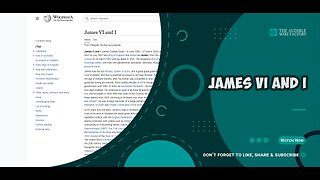 45:39
45:39
The Audible Wiki Factory
1 year agoJames VI and I was King of Scotland as James VI from 24 July 1567 and King of England and
276 -
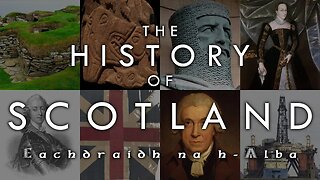 26:56
26:56
Geodiode - Exploring Our World Through Video
1 year ago $0.05 earnedThe History of Scotland
5381 -
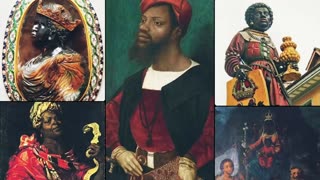 16:11
16:11
What If Everything You Were Taught Was A Lie?
1 year agoBlack Kings and Queens the Rulers of England From 1603/1901 Historians Never Talk?
1.44K1 -
 51:05
51:05
We The People - Constitutional Conventions
3 months agoLandmark Case – Queen not valid monarch and same as King Charles III
2.16K4 -
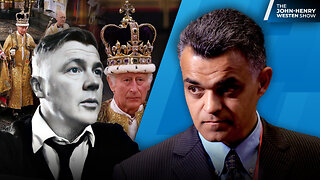 21:31
21:31
The John-Henry Westen Show
1 year agoKing Charles III: King Of England Or Globalist Servant?
2.57K6 -
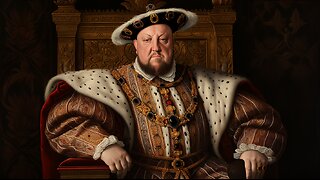 3:17
3:17
The History Storybook
5 months agoKing Henry VIII of England: The Monarch Who Changed History | Storybook
450 -
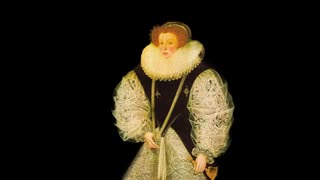 26:08
26:08
What If Everything You Were Taught Was A Lie?
1 year agoBlack Monarchs of the British Isles, Pt.1 Until 1603 English and Scottish Crowns were Separate
402 -
 26:37
26:37
What If Everything You Were Taught Was A Lie?
1 year agoBlack Monarchs of the British Isles, Pt.2 Until 1603 English and Scottish Crowns were Separate
295 -
 8:02
8:02
MindSet Code Ph
1 year agoThe Most Intriguing Royal Family in History | King Charles III
28 -
 4:33
4:33
Wawawiiwa Entertainment
1 year agoKing Charles is still mad that Prince Harry spoke honestly about Camilla
4711